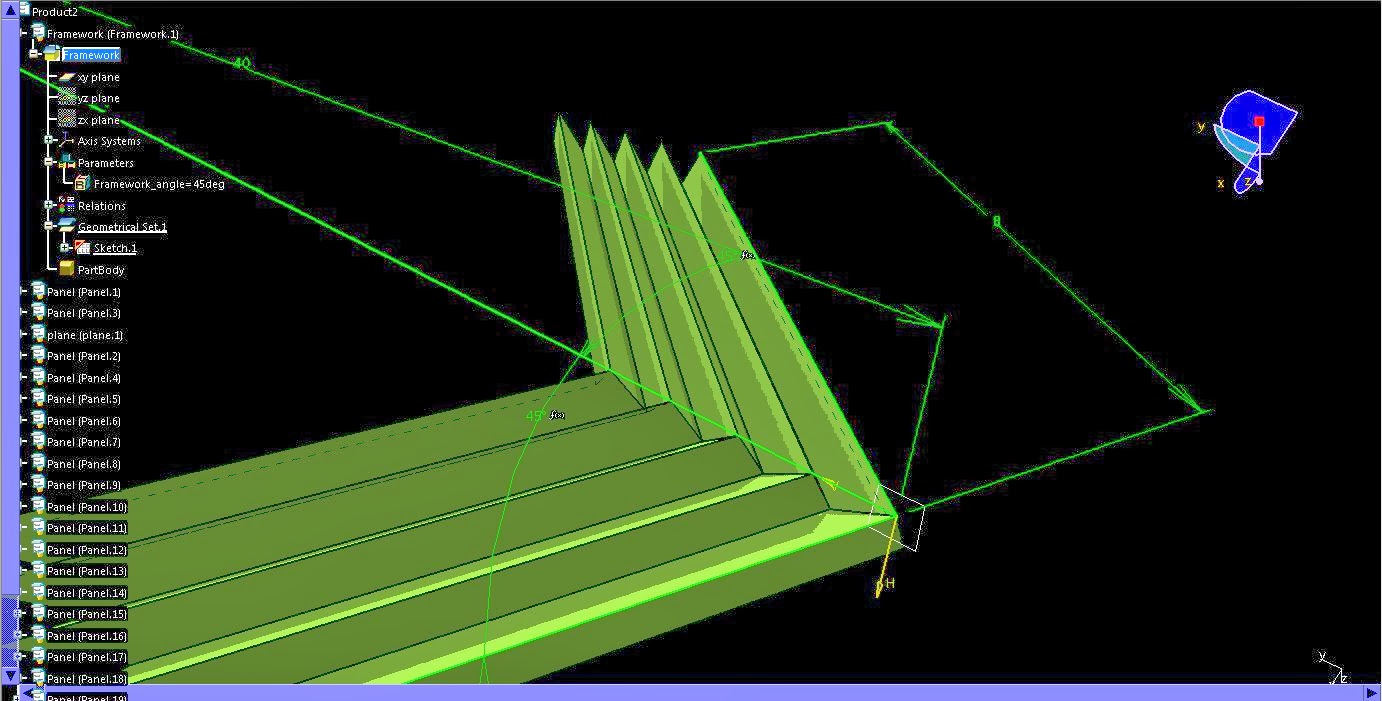This post includes a modified version of the first Folding assignment (http://dtbyemad.blogspot.com/2013/10/folding.html), but with an influence of natural forms. This Biomimetic approach was inspired by the Mimosa Pudica "shy Plant". The basic principles of folding geometry are the same in this project and the previous one, and will consist of two main phases: first, the part, which is the design element (e.g. surface, curve, etc.). Second, is the assembly or "product", which is the mood of organizing all the parts together.
Image 1: this image shows the Mimosa Pudica (http://en.wikipedia.org/wiki/Mimosa_pudica), notice how the leaves are folding. The plant itself reveals the information required to successfully complete this project. The leaves are organized on a central spine that helps one side of the leaf to be - if we use DP terminologies - constrained to it. As for the other side, which will respond to the preceding leaf (either through distance or coincidence). At the same time, the leafs are fixed in length, which means that the movement is controlled by an angle that helps them rotate and fold.
Image 2: this is the first step of the process of creating this bio form. The leaf is first made as a "part". This part will include only one parameter that will control its geometry, and it is an "angle" parameter.
Image 3: Here the spine is made to help constrain the leaves and control their movement. As seen in the image, the framework includes an angle parameter, a value that will control the parts in the assembly.
Image 4: shows the parts assembled in the products. The parts are constrained through three points: first, with the frame; the second, with the part next to it; third, with a "Plane" to help define its movement.
Image 5: shows the leaves' motion when they are being folded, and how they relate to the Mimosa Pudica's actual form and motion.






Comments
Post a Comment